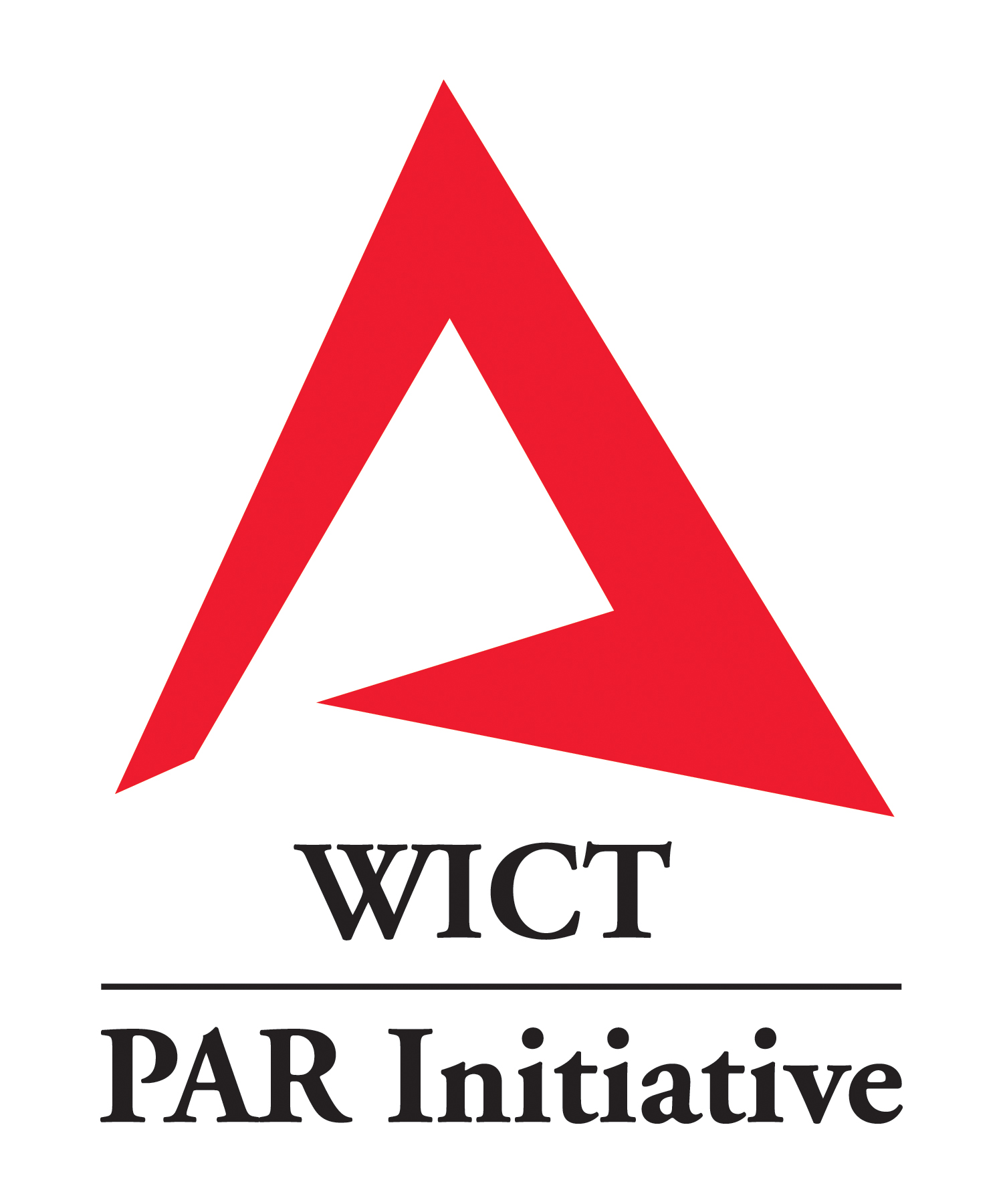Chair
Launched in 1999, the NAMIC employment survey, A Look Toward Advancement: Multi-ethnic Employment in the Communications Industry, provided a baseline of statistics and perceptions about the state of employment in the media, entertainment, and technology industries. This first-of- its-kind industry research led to the creation in 2000 of NAMIC Next’s Executive Leadership Development Program (ELDP) for high-potential executives.
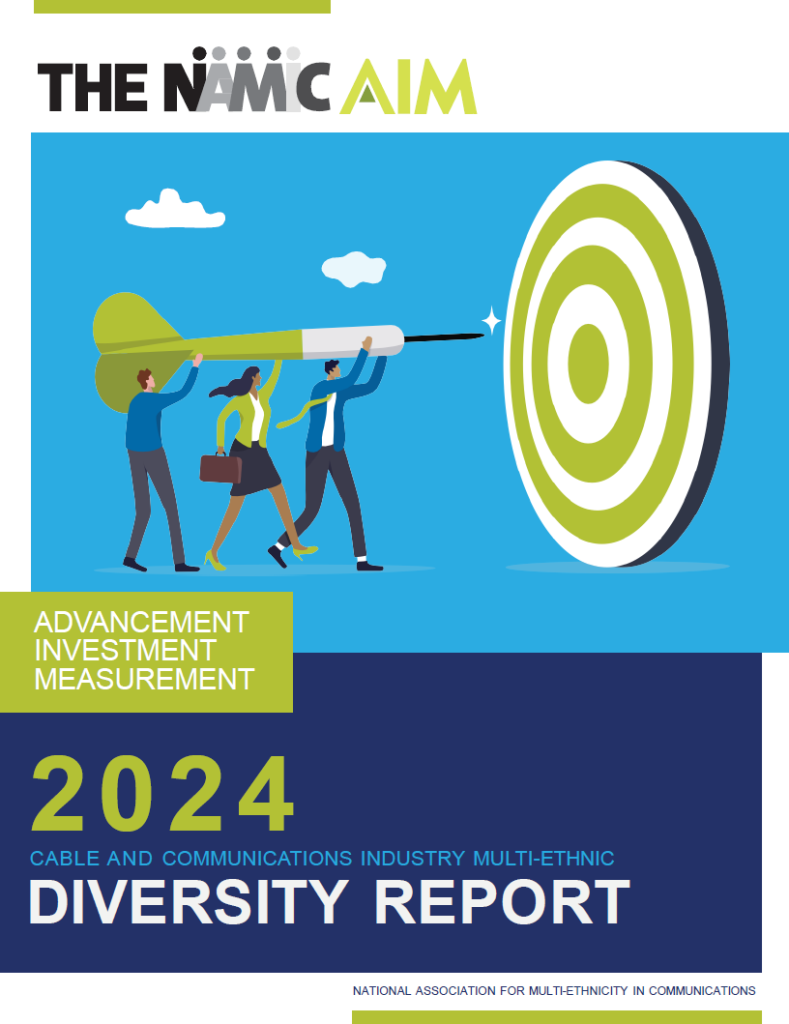
2024 NAMIC AIM Report
The National Association for Multi-Ethnicity in Communications (NAMIC) proudly announces the 2024 iteration of its Advancement Investment Measurement (AIM) survey, conducted in partnership with The WICT Network.
As part of a broader effort, AIM focuses on measuring industry progress in inclusiveness, while The WICT Network’s PAR Initiative addresses gender equity and work/life integration. The survey was administered by PricewaterhouseCoopers and funded by the NCTA Education Foundation.
For over two decades, NAMIC has been at the forefront of gathering and analyzing workforce demographic data to champion inclusivity in the media, entertainment, and technology industries. AIM’s specific objective is to benchmark progress while spotlighting leading practices to help companies foster inclusive workplaces.
Click here to view past reports.
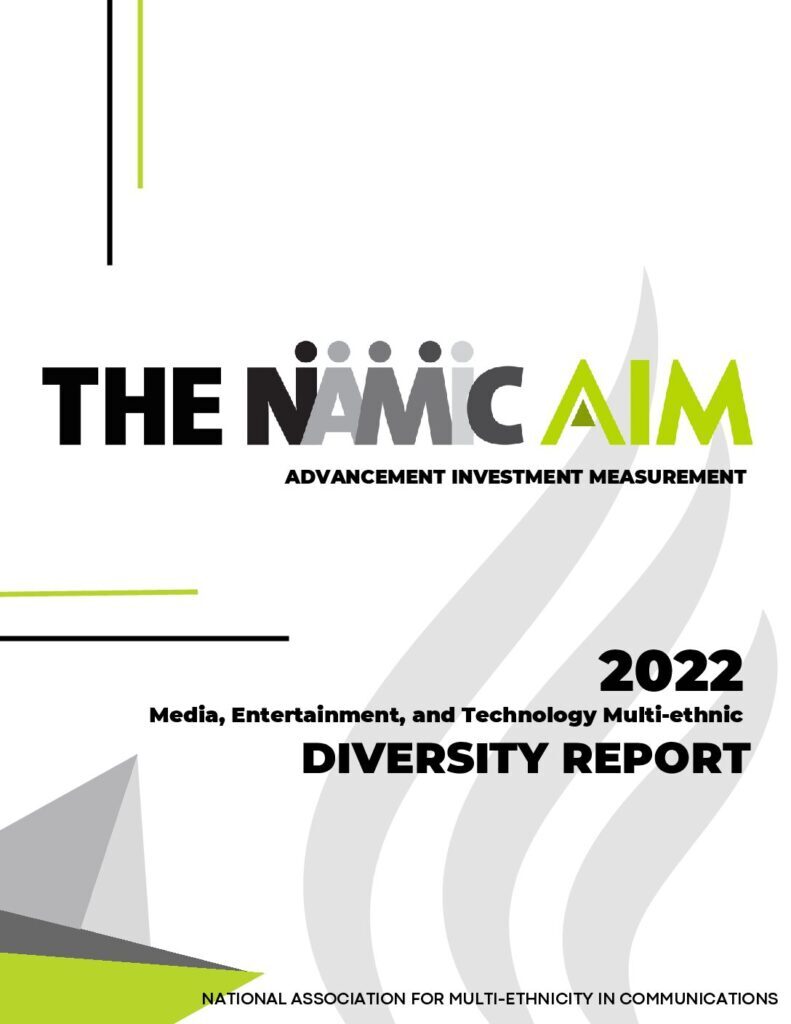
2022 NAMIC AIM Report
This report details the results of the National Association for Multi-ethnicity in Communications (NAMIC) Advancement Investment Measurement (AIM) research survey conducted in 2022 and information on 2021 workforce data for various job categories. The NAMIC AIM survey provides a baseline of statistics on the status of multi-ethnic employment in the media, entertainment, and technology industry. This diversity survey offers a powerful example of the organization’s partnership with industry companies to provide information and resources to nurture a pipeline of diverse talent. In conducting the study, NAMIC teamed up once again with The WICT Network to create the 2022 NAMIC and The WICT Network media, entertainment, and technology Workforce Diversity Survey, a combination of NAMIC’s AIM survey and The WICT Network’s Pay Equity, Advancement Opportunities, and Resources for Work/Life Integration (PAR) Initiative. PwC conducted the survey as a third-party expert. The Walter Kaitz Foundation funded this project.
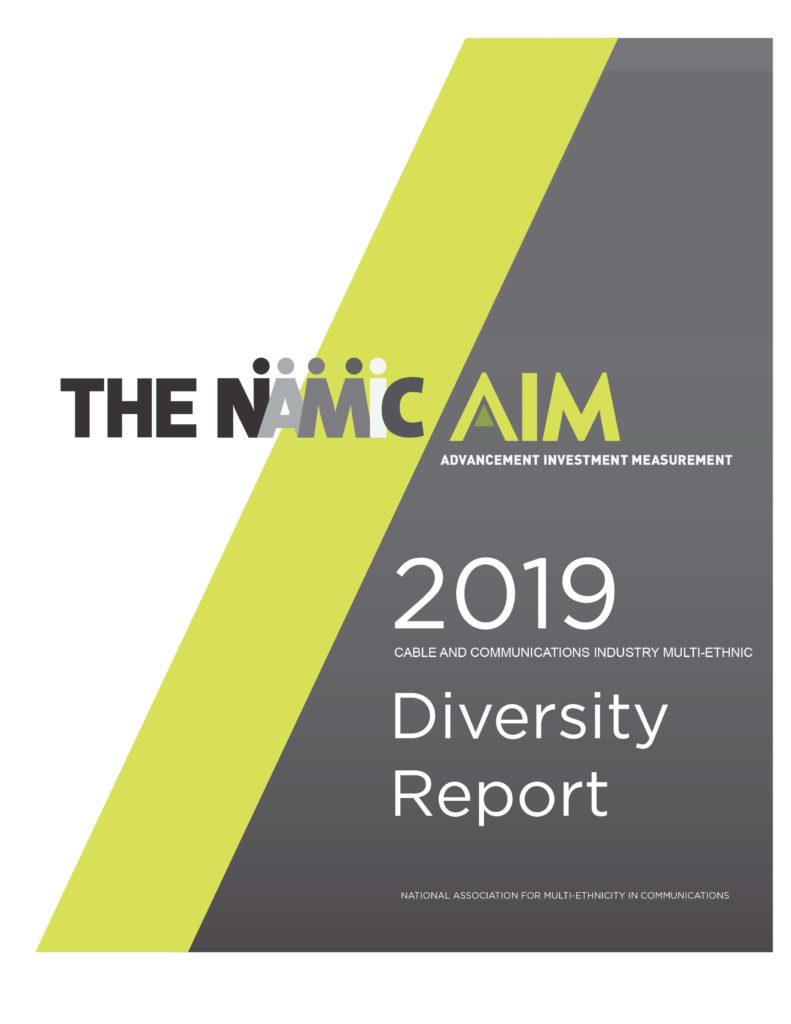
2019 NAMIC AIM Report
This report details results of NAMIC’s 2019 AIM (Advancement Investment Measurement) research survey. The NAMIC AIM provides a baseline of statistics on the status of multi-ethnic employment in the cable and communications industry.
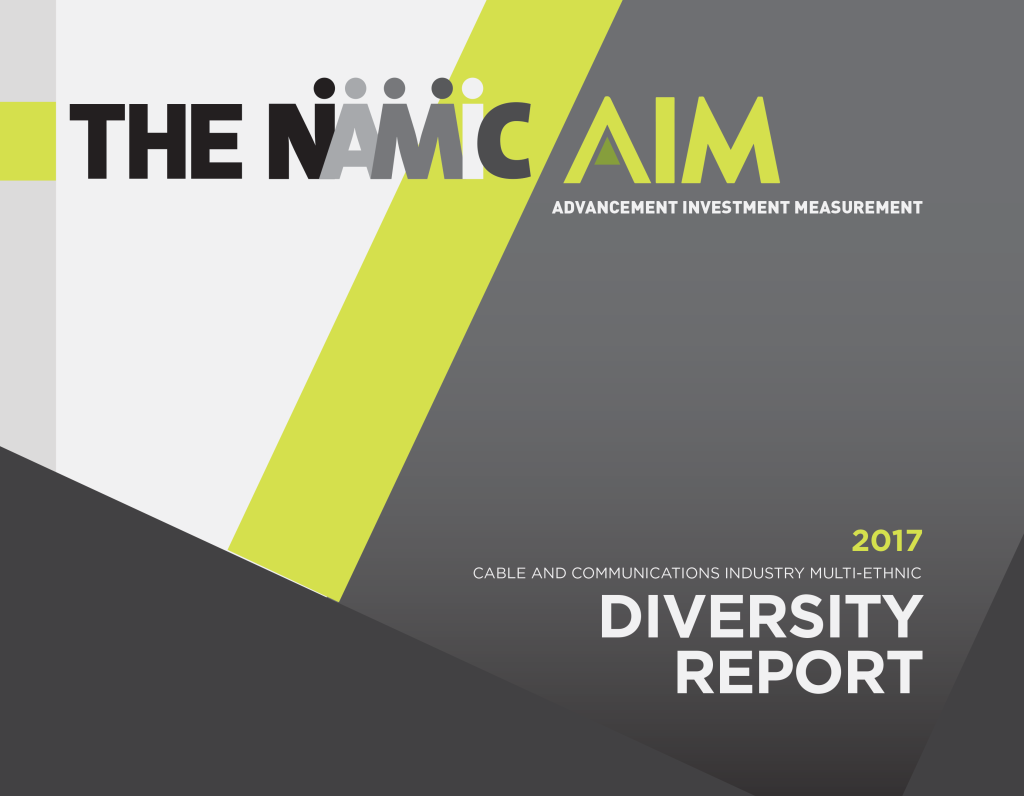
2017 NAMIC AIM Report
The National Association for Multi-Ethnicity in Communications (NAMIC) and Women in Cable Telecommunications (WICT) once again teamed up to combine their research surveys—NAMIC’s AIM (Advancement Investment Measurement) and WICT’s PAR (Pay Equity, Advancement Opportunities and Resources for Work/Life Integration) Initiative—for the 2017 NAMIC and WICT Cable and Communications Industry Diversity Survey.
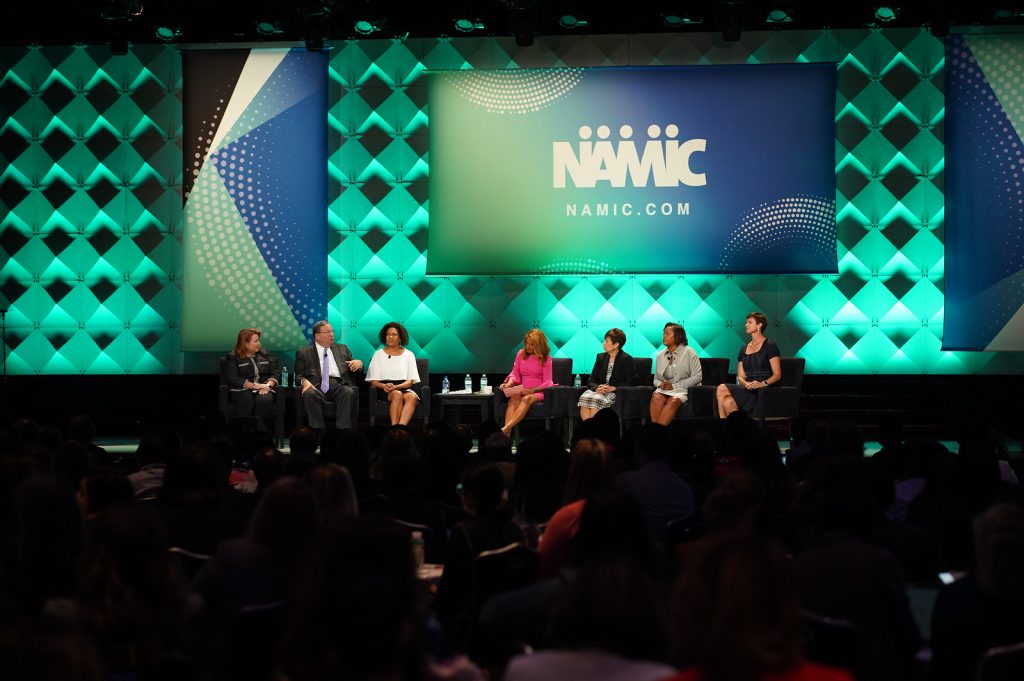
NAMIC & WICT Reveal Findings of AIM/PAR
The two organizations revealed the latest survey data at a Town Hall meeting in conjunction with the industry’s Diversity Week in New York.
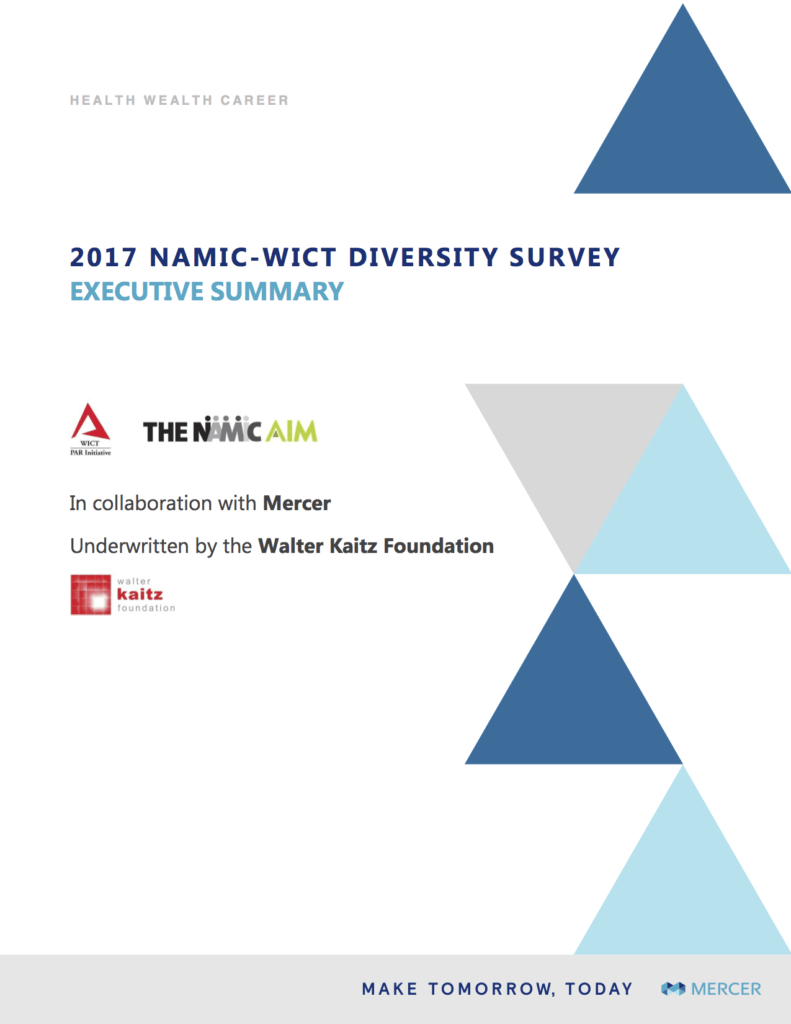
2017 Joint Workforce Diversity Survey – Executive Summary
The National Association for Multi-Ethnicity in Communications (NAMIC) and Women in Cable Telecommunications (WICT) once again teamed up to conduct the 2017 iteration of the NAMIC and WICT Industry Diversity Survey, a combination of NAMIC’s AIM (Advancement Investment Measurement) survey and WICT’s PAR (Pay Equity, Advancement Opportunities and Resources for Work/Life Integration) Initiative.
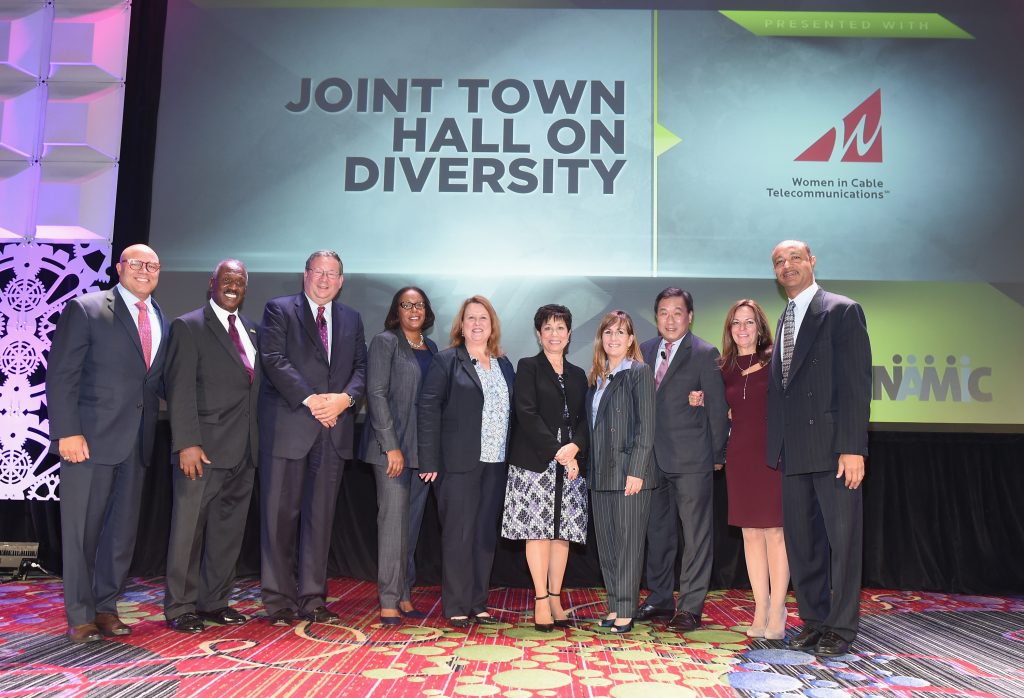
2017 Joint Town Hall on Diversity
In 2017, NAMIC and WICT (Women In Cable Telecommunications) partnered once again on a joint survey for the current editions of the NAMIC AIM* (*Advancement Investment Measurement) and the WICT PAR* Initiative (*Pay Equity, Advancement Opportunities, and Resources for Work/Life Integration). For more information about the survey, click here.
Mercer will independently manage the development of customized reports for each participating company. Overall findings from this research initiative will be presented by NAMIC and WICT during a Town Hall Meeting to be held September 26, 2017, in New York City as part of the industry’s Diversity Week.
Click here to download the slides from the webinar recording.





































